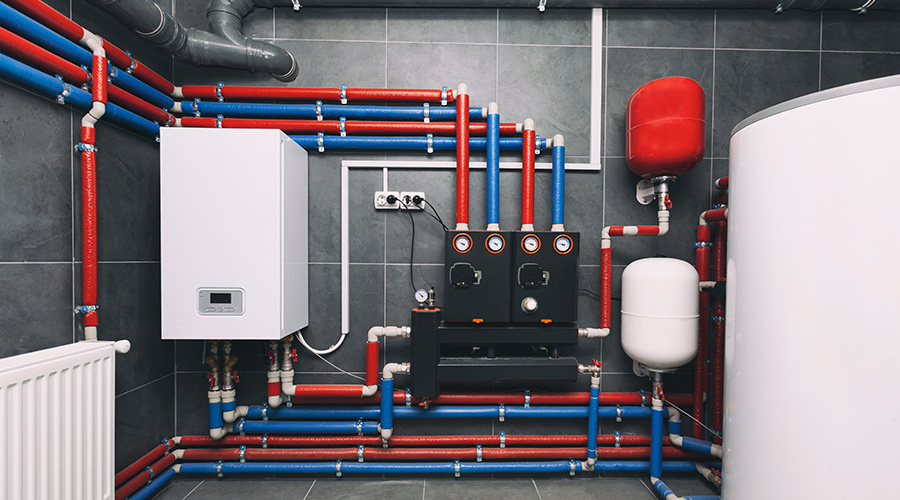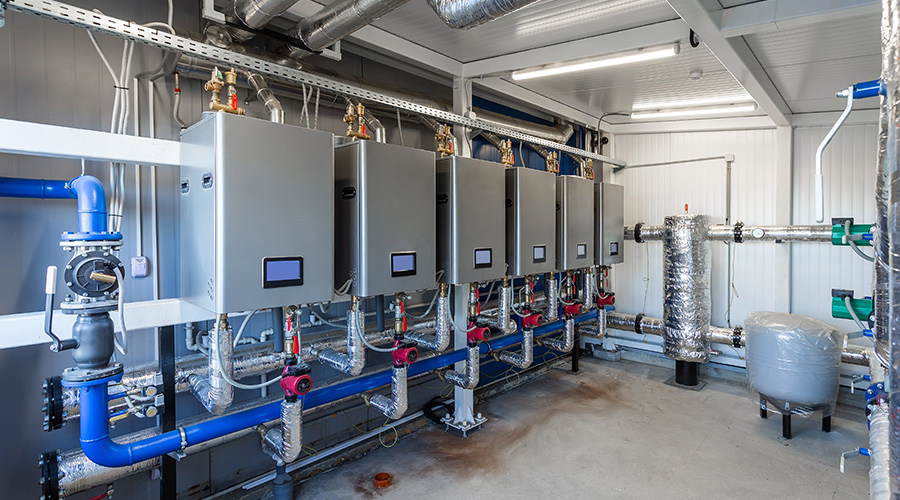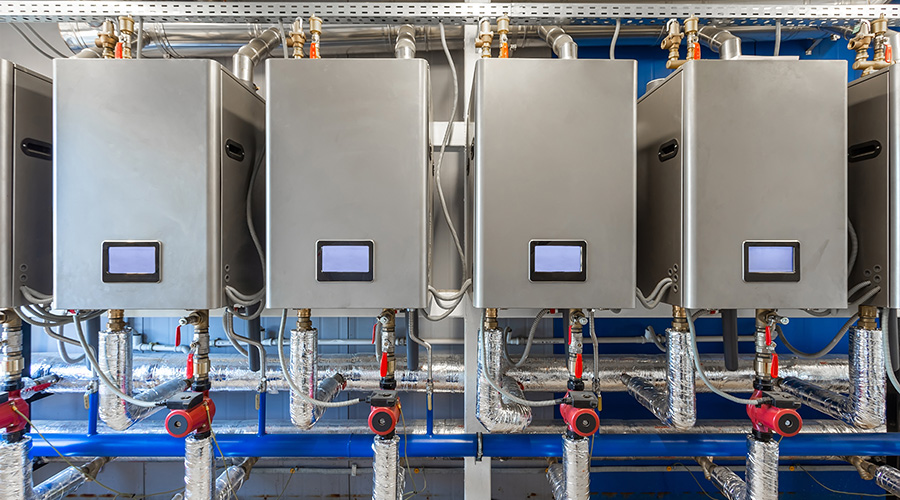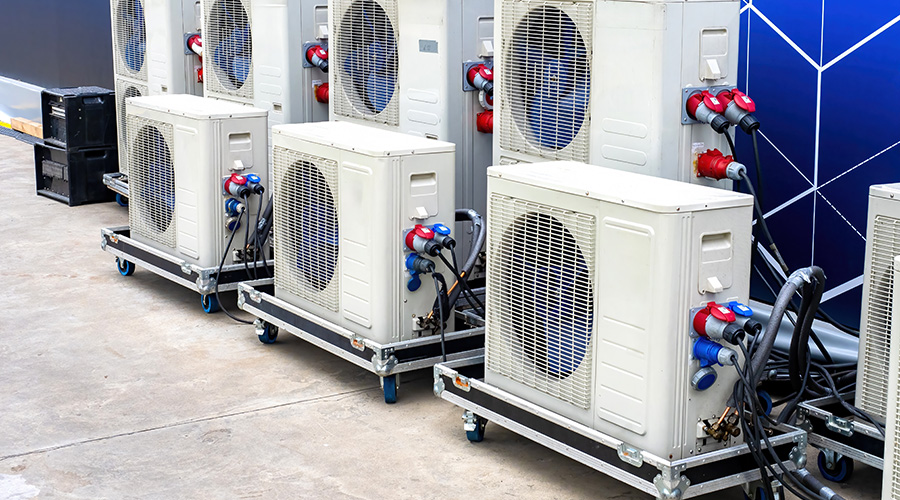Going with the flow: A closer look at air movement
Due to growing demands from building occupants for healthier indoor air quality (IAQ), today’s HVAC systems not only need to heat and cool designated areas. They also have to provide proper airflow throughout facilities. Airflow can affect building occupants by impacting IAQ, life safety, energy use, and thermal comfort. Now, researchers at Lawrence Berkeley National Laboratory (LBNL) are taking a closer look at HVAC systems and airflow in institutional and commercial facilities.
LBNL’s Indoor Environment Department — http://eetd.lbl.gov/
ied/ — conducts research into technologies that reduce the energy HVAC systems require to thermally condition and distribute ventilation air in buildings, as well as improve IAQ, thermal comfort, and the health and productivity of building occupants.
Traditionally, life safety related to building airflow involved controlling the spread of mold spores and other pollutants common in institutional and commercial facilities. Increasingly, though, maintenance and engineering managers are looking at HVAC systems’ ability to protect occupants in the event of a chemical, biological, or radiological attack.
Because air currents can rapidly transport these agents throughout a building, understanding airflow patterns is essential to protecting occupants from these types of threats.
The Indoor Environment Department’s Airflow and Pollutant Transport Group conducts field studies and laboratory experiments to understand the ways that airflows transport pollutants through buildings. Through its web site — http://securebuildings.lbl.gov/ — the group gives building operators advice on safeguarding their facilities against a chemical or biological attack. These recommendations are based on its experimental and computational work on building airflows and focus on dealing with small and medium-sized releases, such as those one might expect from a terrorist attack on a building. The group updates the site as it continues its research.
The department’s Commercial Building Ventilation and Indoor Environmental Quality Group — http://eetd.lbl.gov/ied/viaq/ — also conducts research on health in commercial buildings and particle control technologies, such as filters.
Historically, the main purpose of filters has been to reduce the accumulation of particles on HVAC equipment, which diminish airflow rates and impede heat transfer. According to the group, building operators are increasingly recognizing the potential health benefits of efficient filtration systems, which can reduce the deposition and accumulation of organic matter on surfaces, such as HVAC ducts, where it can become odorous or provide a substrate for microbiological colonization.
Hurricanes’ Wake: A Web of Resources
The full extent of the destruction caused by Hurricanes Katrina and Rita continues to be tallied. But it seems safe to say that institutional and commercial facilities along the Gulf Coast will feel the effects from the storm and resulting flooding for years to come. To aid in the recovery, national associations, government agencies and industry organizations have pulled together essential information that managers can tap into — in both the short and long terms — to help their organizations recover and rebuild. Among the most useful web-based resources are from these organizations:
The National Clearinghouse for Educational Facilities, www.edfacilities.org. The site pulls together resources for schools, including a safe school facilities checklist, guidelines for mold remediation, state-specific cost estimates for construction, and guidelines for disaster and crisis management for school districts and community colleges.
The National Institute for Occupational Safety and Health, www.cdc.gov/niosh/topics/flood. Among the resources accessible through this site are guidelines from the Centers for Disease Control and Prevention on personal protective equipment, disaster site management, air quality, electrical hazards, confined spaces, carbon monoxide, hazardous materials, and motor vehicle and machine safety.
The American Society for Healthcare Engineering (ASHE), www.ashe.org/ashe/codes/ hurricane/index.html. ASHE’s site offers a page dedicated to support for healthcare facilities, as well as a members-only forum for discussions related to the hurricane, guidance on reopening shuttered hospitals, and a link to information on remediating water problems in buildings.
The American Society of Mechanical Engineers (ASME), www.asme.org/katrinahelp.html. Through its site, ASME is coordinating with Engineers Without Borders (EWB). EWB to provide engineering support for affected facilities and organizations in the Gulf Coast area. Project teams will help rebuild areas devastated by Hurricane Katrina.
The International Code Council, (ICC) www.iccsafe.org/safety/ hurricane/index.html. Among many links, ICC’s site provides support for building departments in need of assistance, as well as links to information on safe use of portable generators and propane, as well as seminars on hurricane preparedness and recovery.
Building Owners and Managers Association, (BOMA) www.boma.org/ hurricanekatrina.htm. The site boasts a long list of industry links on a range of disaster-recovery issues, including: handling flood insurance claims; water system repairs; illness prevention general guide; substantially damaged buildings information; and financial tips and resources after hurricane recovery.
The U.S. Environmental Protection Agency (EPA), www.epa.gov/katrina/index.html. EPA’s site links visitors to updates on its response activities, resources on protecting human health, water quality and health issues, and the potential health and environment risks associated with returning to the city of New Orleans.
Editor’s note: Our November 2005 issue will feature expanded coverage of the hurricanes’ aftermath and disaster recovery.
Correction
In our August 2005 issue, we mistakenly attributed the Green Guide for Health Care (GGHC) to the U.S. Green Building Council and the American Society for Healthcare Engineering. In fact, the guide is a joint project of the Center for Maximum Potential Building Systems (CMPBS) and Healthcare Without Harm. It was convened by CMPBS and is co-sponsored by Hospitals for a Healthy Environment, the Merck Family Fund, and the New York State Energy Research & Development Authority.
Related Topics:












